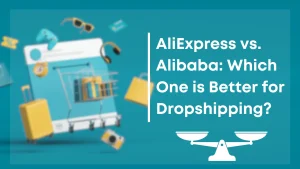Introduction
You are not alone if you are considering launching an eCommerce business. eCommerce is thriving, with more than 2.14 billion individuals projected to purchase online this year. That is a large number of prospective clients!
But where do you begin? It may appear to be difficult, but it is not as difficult as you may believe. You can be up and running in no time with a little forethought and work.
We’ll guide you through the six phases of launching an eCommerce business in this blog post:
- Select a product to sell.
- Choose a business structure.
- Create an online store.
- Configure payment processing
- Begin marketing your company.
- Keep track of your inventory.

1. Select a product to sell.
The first step in launching an eCommerce business is selecting a product to sell. This might be a product about which you are enthusiastic, a product in which you have experience, or a product in which you believe there is a good market opportunity.
Here are a few things to think about while selecting a product to sell:
- Demand: Determine the degree of demand for the product. Is there a huge client base willing to acquire your offering?
- Competition: Examine the competitive landscape. Can you distinguish your product and create a distinct value proposition?
- Profitability: Examine the profit margins involved with selling the goods. Can you make a living off of it?
- Shipping: Consider the shipping costs and logistics. Is it simple and inexpensive to send the product?

2. Laying the Legal Foundation: Choosing Your Business Structure
Creating a legal framework is critical for protecting your company’s interests and guaranteeing compliance with rules. The following are examples of common business structures for eCommerce businesses:
- Sole Proprietorship: The most basic form, with the owner individually accountable for the company’s debts and liabilities.
- Partnership: A partnership agreement is required since partners share ownership and liability.
- LLC (Limited Liability Company): Provides tax flexibility while protecting personal assets from business responsibilities.
- Corporation: Provides limited responsibility and a legal entity separate from the owners, but with more complicated formalities.

3. Create an online store.
Your virtual storefront is your internet store. It’s where prospective buyers will learn about your items, read reviews, and buy them.
There are several approaches to developing an internet store. You have two options: utilize a DIY platform like Shopify or Wix, or engage a professional web developer.
Here are a few things to think about while developing an online store:
- Usability: The platform should be simple to use and maintain.
- Design: The store should be visually appealing and user-friendly.
- Functionality: The store should have all of the tools you’ll need to sell your items, such as a shopping cart, checkout system, and payment processing.
- DIY Platforms: Easy-to-use platforms such as Shopify and Wix provide drag-and-drop interfaces and customizable templates.
- Professional Web Development: Hire a web developer to create a custom storefront that reflects your brand and vision.

4. Configure payment processing
To take payments from your clients, you must first set up payment processing. There are several payment processing alternatives accessible, including PayPal, Stripe, and Square.
Here are a few things to think about when selecting a payment processor:
- Fees: A reasonable fee should be charged by the payment processor.
- Security: The payment processor should be safe and protect the information of your clients.
- Integration: The payment processor should be simple to integrate with your online store.

5. Start marketing your company.
Once your online store is up and operating, you must begin promoting your company to potential clients. You may employ a variety of marketing platforms, such as social media, search engine optimization (SEO), and email marketing.
Here are a few things to think about while promoting your eCommerce business:
- Social Media: Engage your target audience on social media channels such as Facebook, Instagram, and TikTok.
- Search Engine Optimization (SEO): Optimize your website and content to appear higher in search engine rankings.
- Email Marketing: Build an email list and cultivate consumer connections with tailored newsletters and promotions.

6. Managing Your Inventory to Ensure Efficient Operations
Inventory management is critical to completing orders and ensuring customer satisfaction:
- Inventory Management Systems: Track stock levels, restock items, and improve inventory turnover by using inventory management software.
- Shipping Logistics: Simplify shipping operations by working with reputable carriers and providing a variety of shipping choices.
- Customer Service: Make good customer service a priority by responding quickly to questions, resolving difficulties, and keeping a favorable reputation.
Starting Your eCommerce Journey: Success Tips
Consider the following success recommendations as you begin your eCommerce journey:
- Conduct Extensive Market Research: Learn about your target audience, industry trends, and competition environment.
- Create a Remarkable Brand Identity: Create a distinct brand that speaks to your consumers and stands out in the market.
- Prioritize High-Quality Product photographs and Descriptions: Draw attention to your product with visually attractive photographs and detailed descriptions.
- Use Social Proof: Display customer evaluations and testimonials to increase trust and credibility.
- Optimize for Mobile Users: For a consistent user experience, make sure your online shop and marketing materials are mobile-friendly.
- Continuously Monitor and Adapt: Analyze your website traffic, sales statistics, and client comments on a regular basis to fine-tune your plans.
Remember that beginning an eCommerce business is a lifelong learning experience. Accept the difficulties, adjust to changing market conditions, and remain dedicated to offering excellent client experiences. You may turn your eCommerce enterprise into a thriving success story with perseverance and careful strategy.
Conclusion
Starting an eCommerce business is difficult, but it can also be quite lucrative. You can establish a successful eCommerce business that you can be proud of with the appropriate strategy and execution.





